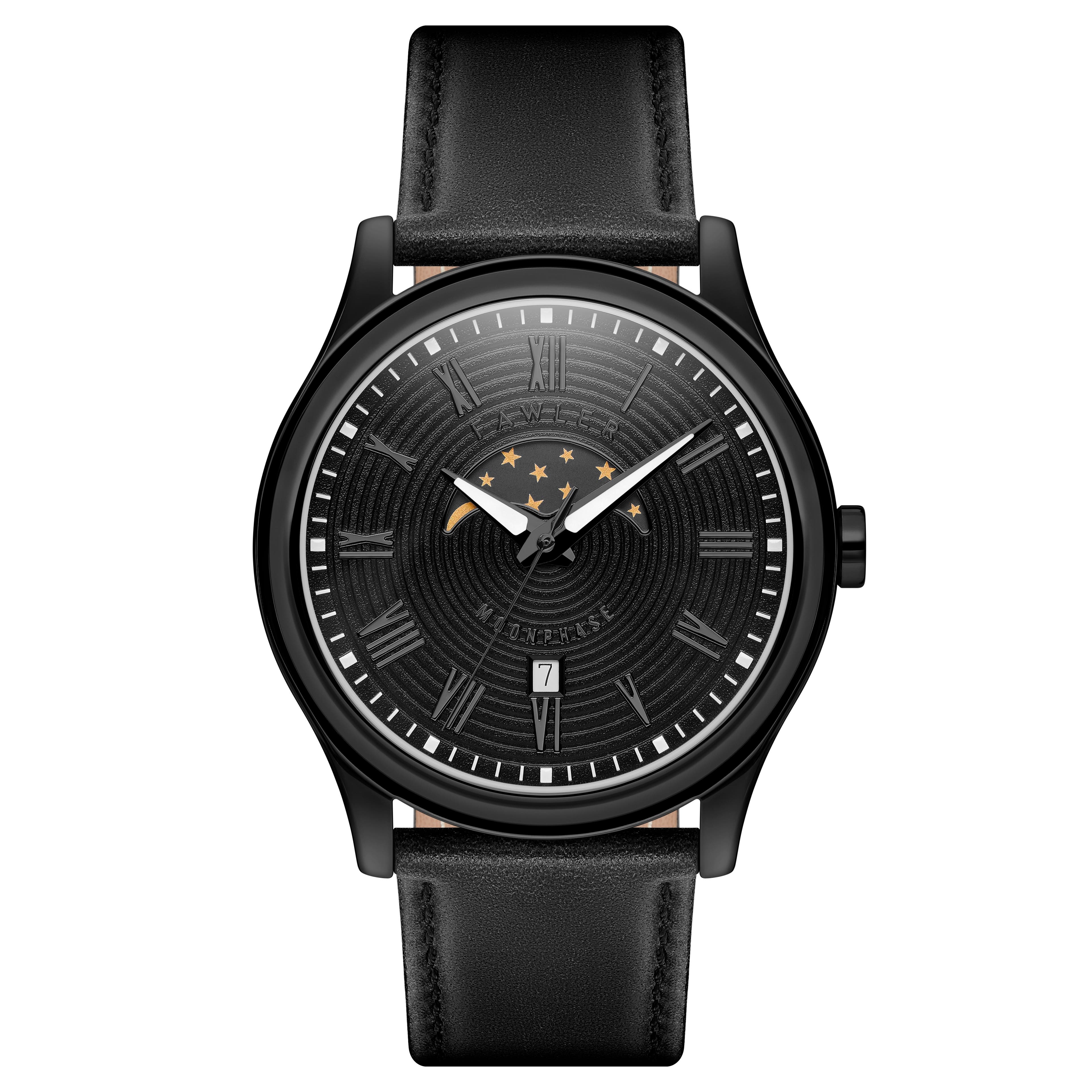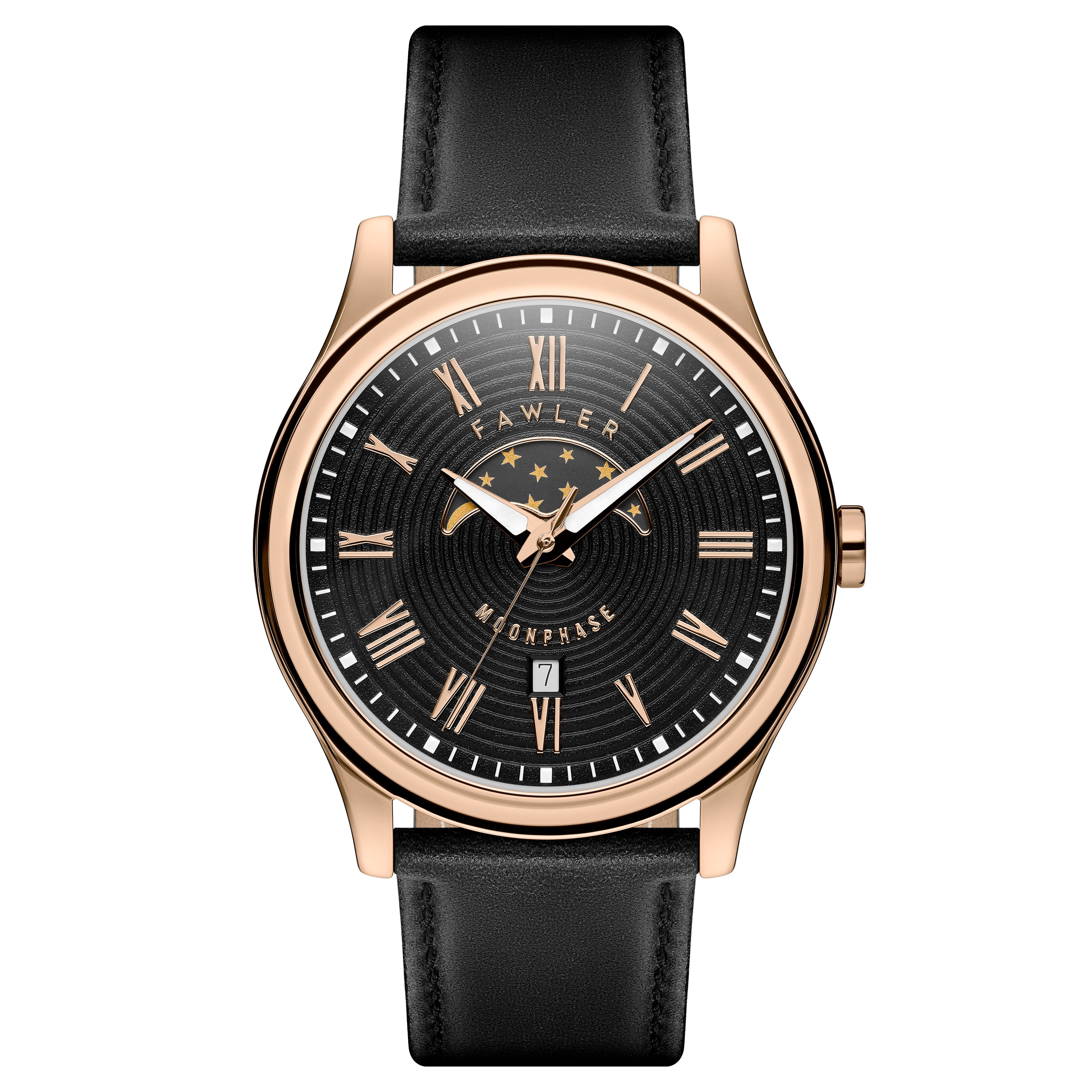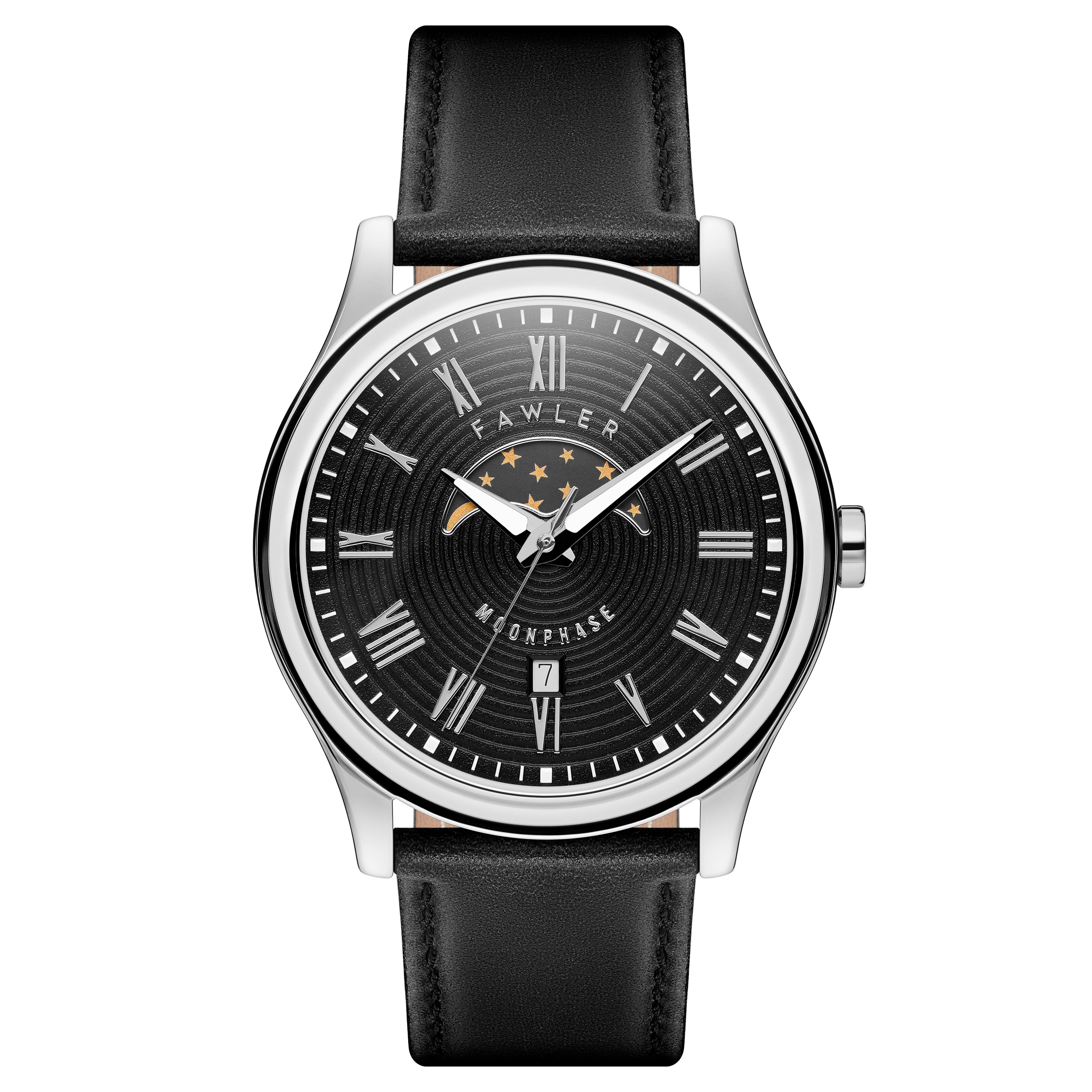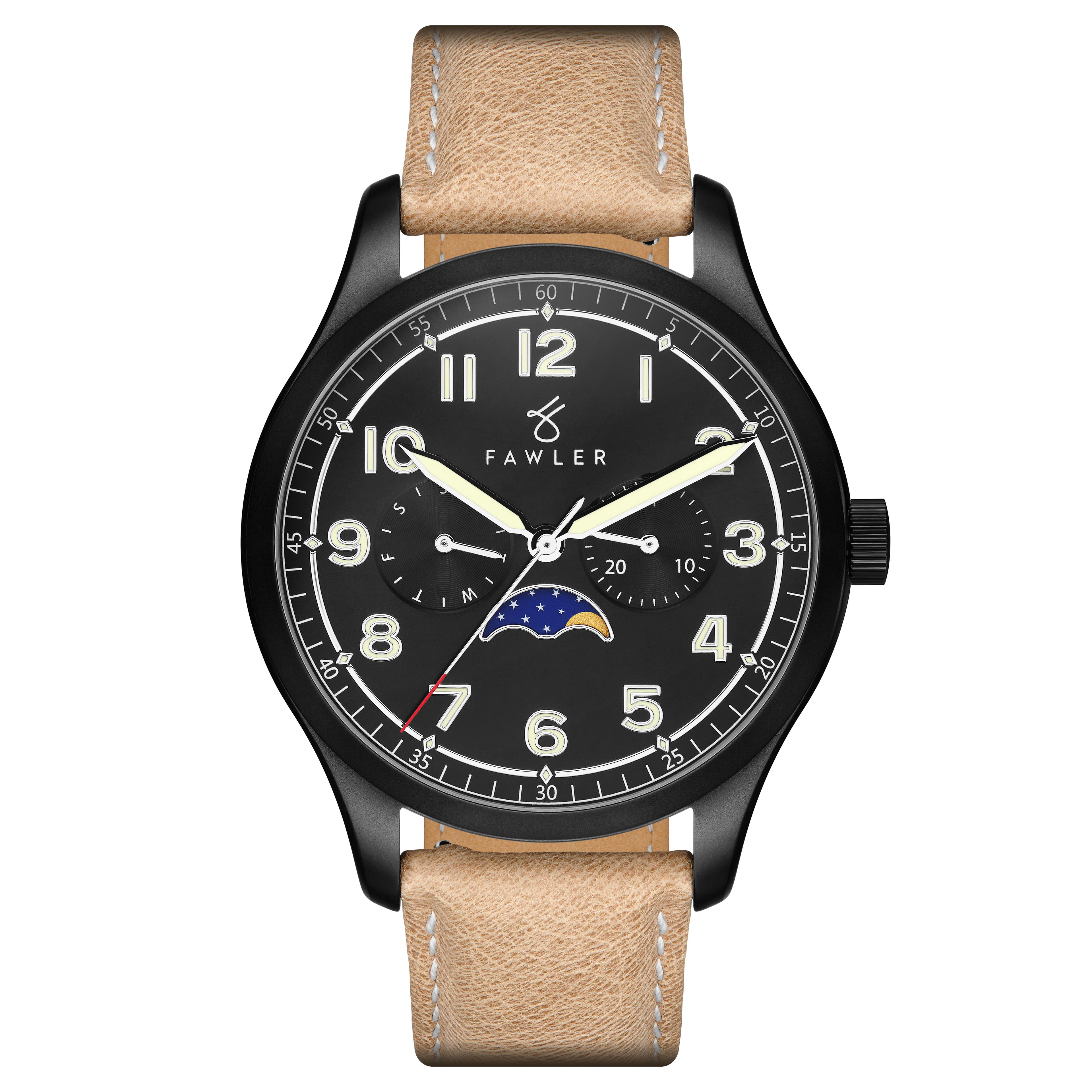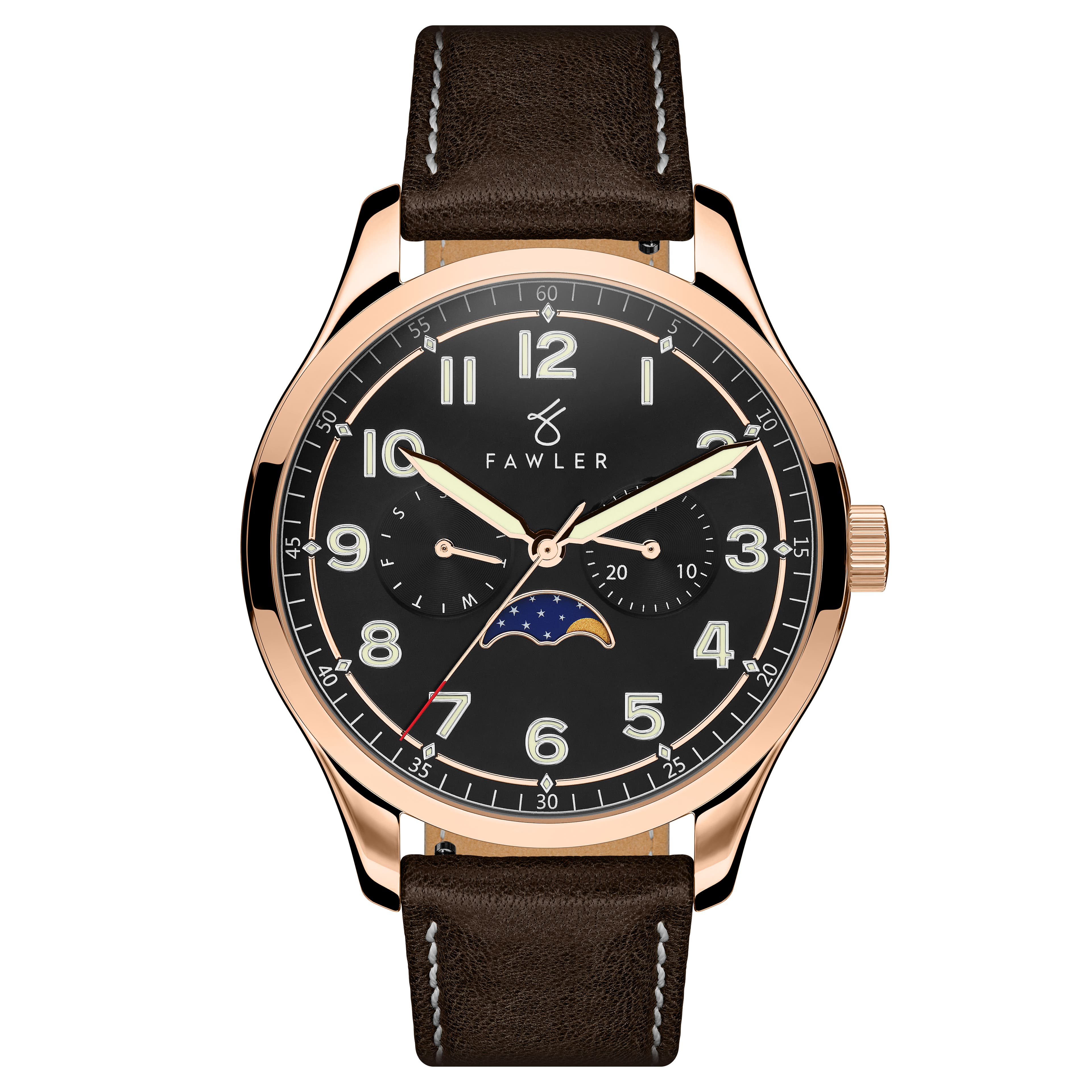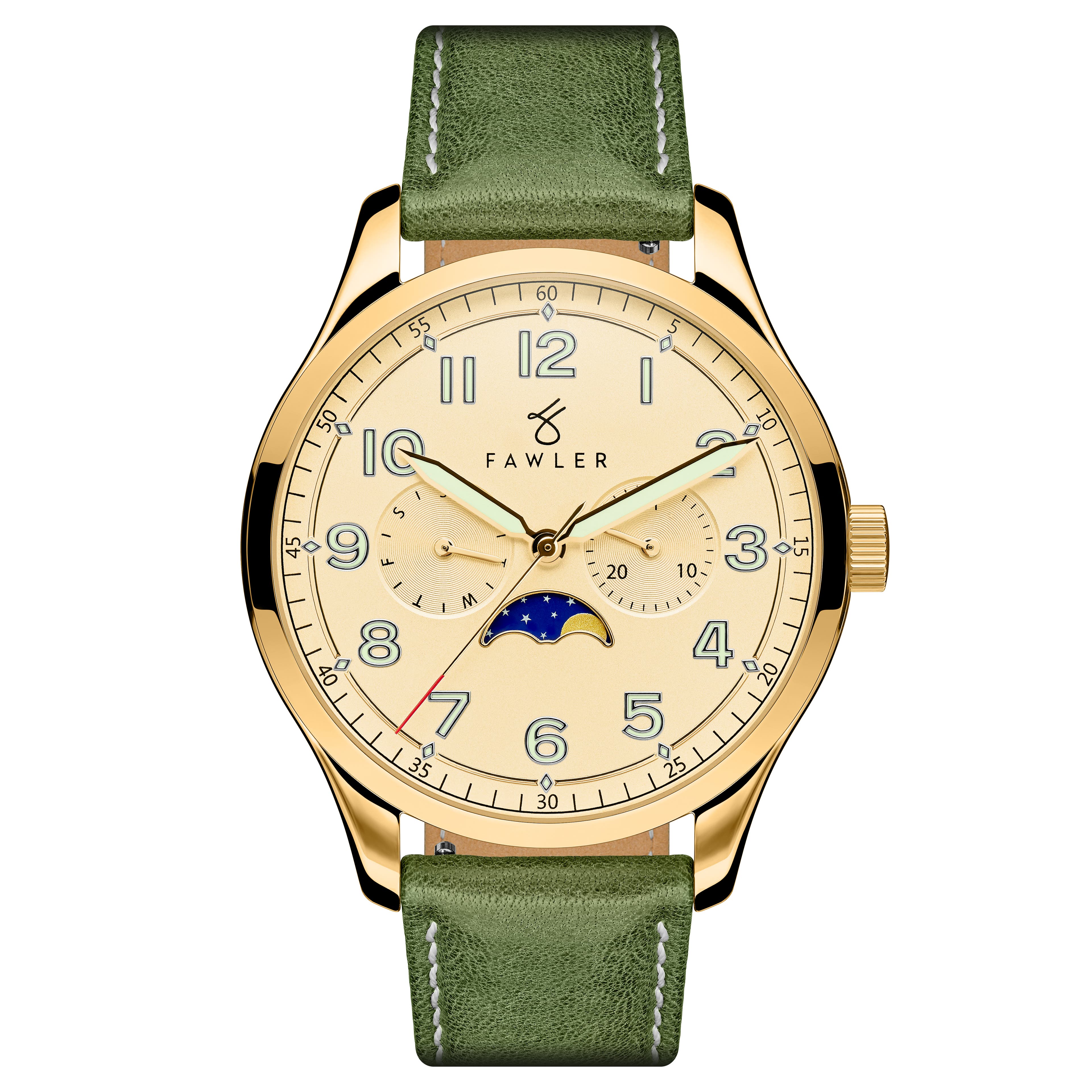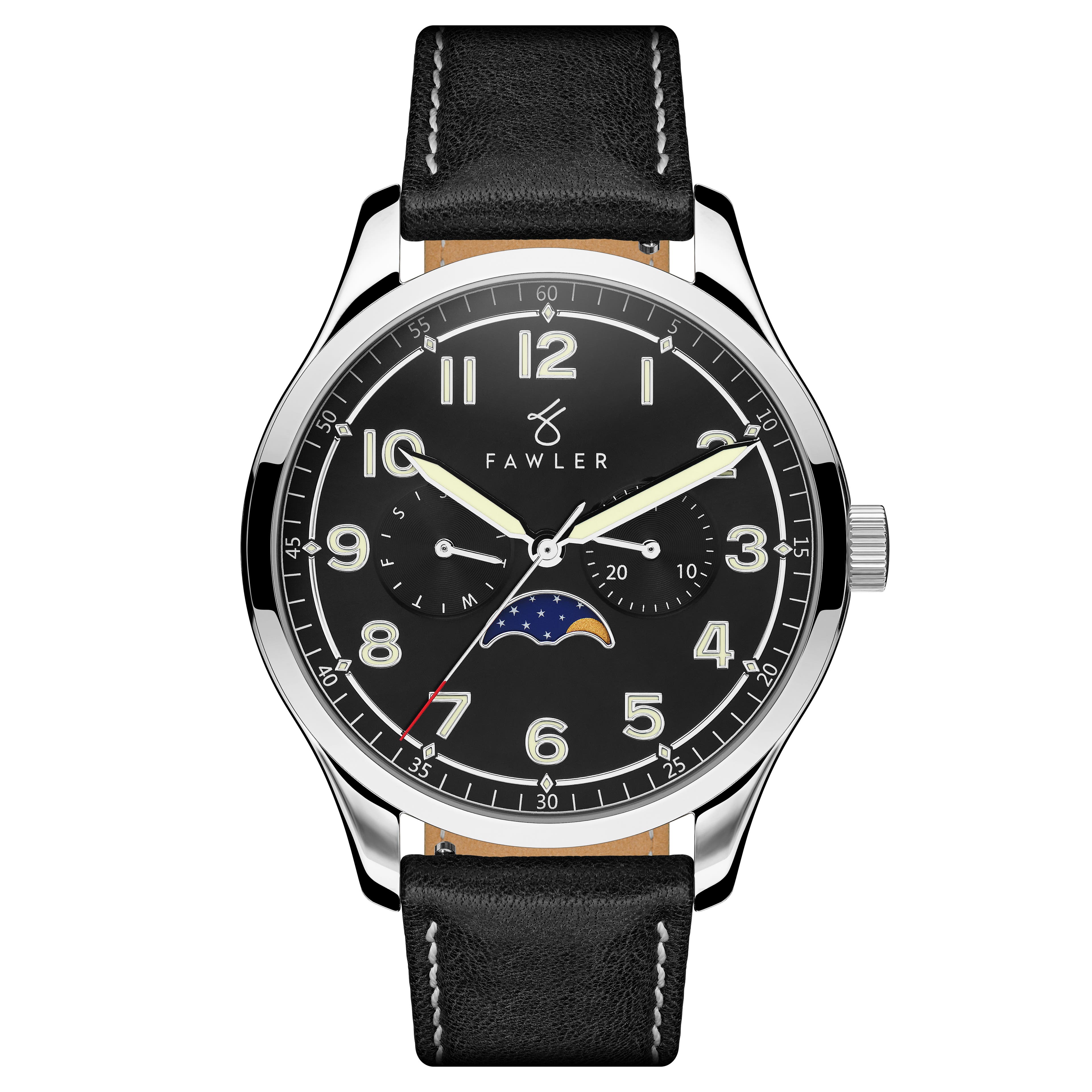What is a Moonphase Watch & How to Set It
Learn how to read and set one of the world’s oldest watch complications. From showing the phases of the Moon to telling its age, what a moonphase watch does is only part of the story.
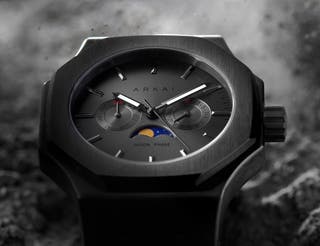
From surfers dependent on the tides to torch-wielding villagers hunting werewolves during a Full Moon, our lives are connected to the 4.53-billion-year-old rock orbiting our planet. Even if you don’t surf or live in the Middle Ages.
The Sun may start the day, but it’s the phases of the Moon that provide the foundation of what we’ve come to know as months. Here in Denmark, the word ‘month’ even references the Moon – måned.
Throughout history, tracking the Moon as it orbits Earth has been the way to schedule celebrations, harvest crops and even send paychecks.
Just ask the Three Wise Men… there's something mysterious about the night sky. A fascination that has connected us to it throughout history, and a moon phase watch is your chance to carry that with you.
From the Antikythera – an ancient Greek model of the solar system – to churches of the Renaissance, the moon phase complication has survived time and holds the title of the world’s oldest watch complication.
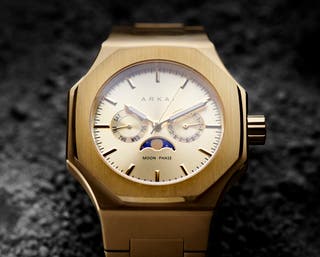
What is a Moonphase Watch?
A moonphase watch is a timepiece that shows the different phases of the Moon through a small hole on the dial. Through the aperture (the small opening), you’ll see the current phase of the Moon exactly as it looks in the sky without having to ever go outside at night.
The watch gets its name from the shape of the Moon as it travels around the Earth. These phases – the shape of the Moon’s sunlit portion as viewed from Earth – are called Moon phases or lunar phases.
The shape of the Moon gradually changes throughout the month as it orbits the Earth and the Earth orbits the Sun. The aperture hides the part of the moon that isn’t visible during the 29.5-day lunar cycle.
In case you forgot all of the science you learned in primary school, remember that we can only see the Moon if the Sun shines on it. When the Moon is between Earth and the Sun (New Moon), we won’t see it. But if the Moon is behind the Earth (our planet is between the Moon and the Sun), we’ll see it illuminated. This is called a Full Moon.
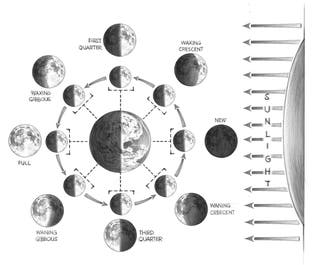
Moonphase watches highlight 4 of the 8 lunar phases (as seen from the Northern Hemisphere):
- New Moon - The Moon is between the Earth and the Sun and the side of the Moon facing us receives no direct sunlight – only the light reflected from Earth illuminates the Moon.
- First Quarter - The Moon has travelled ¼ of the way around the Earth and is 90 degrees away from the Sun. It is half illuminated (right side) from our point of view on Earth.
- Full Moon - The Moon is fully illuminated by the Sun from our vantage point on Earth and is 180 degrees away from the Sun.
- Last Quarter (Third Quarter) - The Moon has travelled another ¼ of its orbit around the Earth and is lit up on the left side. It’s the exact opposite of the First Quarter.
What’s the Difference Between a Sun and Moon Watch and a Moonphase Watch?
Moon phase watches have a complication that tracks the changing phases of the moon. Sun and moon watches have a dial that shows the sun during the day and a moon at night.
While watches with a sun and moon display are nice to look at, they’re basically a.m./p.m. watches. They, like watches with a moonphase complication, are worn more for their design and style than for actually knowing if it’s daylight or not.
These are kind of useful if you live in a place like Denmark where daylight seems to shrink to minutes during the winter. It’s always nice to know that the Sun should be out… even if it’s not.
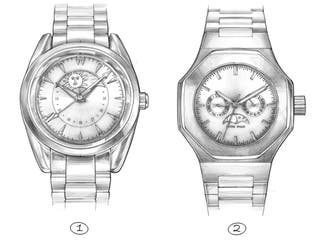
How Does a Moonphase Watch Work?
Before diving into the mechanics of a moonphase complication, it’s important to understand what powers its movement. Here’s a quick top-up on watch movements: Automatic watches generate power from your movement while you wear them. Mechanical watches need you to wind the crown in order to work. And watches with quartz movement are battery-powered.
On a moonphase watch with quartz movement, the internal workings are programmed and things are generally accurately calculated. For mechanical and automatic timepieces, the process gets a bit more technical as a set of gears is required to track the Moon’s position.
Behind the dial of a typical moon phase watch is a disc with 2 identical moons on it. The disc rotates one full cycle every 29.5 days. This mimics the Moon’s orbit around Earth – around 29 and 1/2 days.
This disc is moved by a 59-tooth gear that advances one notch every 24 hours. It’s this very slight movement of the dial that causes many first-time moonphase wearers to think that their watch isn’t working.
Two moons are used on each disc because after a single 29.5-day lunar cycle is over, the 2nd moon will appear in the aperture.
Lunar Cycle = 29.5 days
59 Teeth on the Gear = 29.5 x 2
The most common moonphase subdial aperture is in the shape of a semicircle with 2 bumps on the sides called a bosom… for reasons that should be obvious. These represent the Earth’s silhouette.
If your moonphase watch is set correctly, you’ll track the moon as it appears from behind the Earth on the left and eventually disappears on the right. This also lets you know if the Moon is coming or going (waxing or waning).
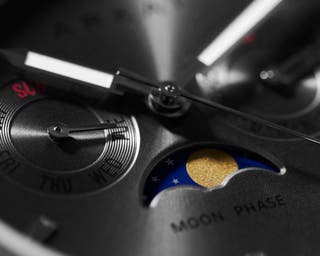
Are Moonphase Watches Accurate?
Most moonphase watches are not accurate forever and will go out of sync in less than 3 years. This is because the lunar or synodic month is actually 29 days, 12 hours and 44 minutes. Manufacturing limitations mean that the teeth on the gear have to be approximated to a round number like 59.
Ryan Schmidt, the author of The Wristwatch Handbook, puts it this way, “As the exact lunar cycle lasts 29.530588853 days, the simplest way to deliver this mechanically is to use two images of the Moon on a 59-toothed wheel with teeth that are driven by a single finger attached to the hour wheel. This means that each Moon on the disc will pass through the aperture every 29.5 days. Because of the 0.03-day difference, the indicator will have lost a day of accuracy if it ran solidly for 3 years.”
If you don’t mind adjusting the complication once every 3 years, you’ll find that the moonphase complication is accurate enough for everyday wear. If the idea of a slight inaccuracy every third year is too much to handle… shop for an astronomical moonphase watch with a 135-tooth gear. But even with 76 extra teeth and increased precision, you’ll still have to correct the complication every 122 years.

2 Types of Moonphase Complications
Whether you wear a classic wind-up mechanical watch, a pocket watch, or one with battery-operated quartz movement, it’s the moon phase display that captures the attention of envious friends and colleagues.
There are 2 types of displays to choose from – bosom and radial.
Bosom Moonphase Watch - The most popular moon phase watches have a bosom display. This uses a crescent-shaped aperture with 2 bumps on the sides representing the Earth’s silhouette.
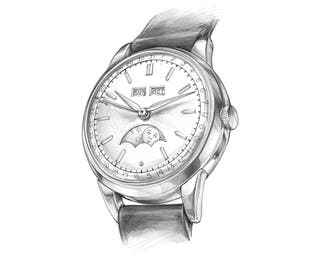
Radial Moonphase Watch - The radial moonphase display uses a hand to point to the shape of the Moon. In a radial display, it's the indicator hand that moves, not the pictures of the Moon.
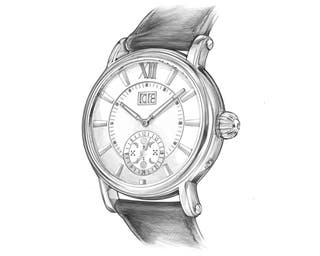
How to Set a Moonphase Watch
As you can imagine, there are different types of moonphase complications with different levels of complexity. Check our general advice below against the instructions that came with your timepiece before setting your moonphase watch.
- Before setting the moonphase complication, pull out the crown and move the hands to 6:30. This is a precaution – in case their position damages the movement as you set the moon phase.
- Next, use the internet to find
what the Moon looks like right now from Earth. There are plenty of websites available with exact information… so you don’t have to sit outside tonight and figure it out yourself.
It’s important to see if the Moon is waxing (going from New Moon to Full Moon – left side of the aperture) or waning (Full Moon to New Moon – right side of the aperture). - Once you know the phase of the Moon, move the disc so that the Full Moon is showing. This is when the moon is in the middle of the window.
- From here, count the days since the last Full Moon. Turn the crown to move the moon to the current phase. Usually one notch for each day.
- Push the crown back to normal position and you’re good to go.
How to Read a Moonphase Dial

How to Read the Age of the Moon on a Moonphase Watch
While the actual Moon is around 4.5 billion years old, some moonphase watches measure the age of the moon as the number of days since the last New Moon. The time between these 2 moons is shown in increments of 1-29.5 days on the dial.
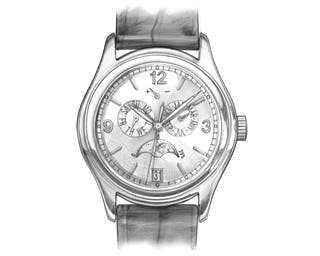
Why Do People Buy Moonphase Watches?
In all honesty, there’s an app or a website with much more detailed information on the waxing and waning of the Moon. Plus, you can always go outside and look up – the Moon isn’t hiding. But the other – dare we say – more important reason for wearing a moon phase watch is how it looks and the story it’ll tell orbiting the Earth around your wrist.
What a moonphase watch does is only part of the story that it tells. At Trendhim, we believe that every accessory you wear is a part of your story. The one you tell yourself and the one you tell others. Whether it’s dressing up for an interview or finding the perfect watch for a first date… what you wear will become a part of your journey and a detail in your story that makes it special.

